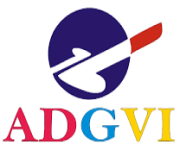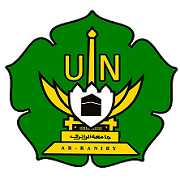- The Circuit Journal is published twice a year (the first issue was February and August).
- The articles which are selected must be in original ideas, scientific articles, and never published or submitted to any other media.
- The Circuit Journal manuscripts provide an original fundamental research, related to electrical engineering, electrical engineering education, and vocational education.
- The papers are supposed to be written in English. Authors who feel their English language manuscript need require editing.
- The manuscripts should be in 10-20 pages, consist of an A4 paper (quarto).
- Margin text is 3 cm from left and right, 2 cm up and down. The articles in written in Microsoft word, single space (1.15), Times New Roman 12.
- The framework writings should include title, author's name, affiliations name and author's email.
- The title: concise, informative and descriptive. Avoid abbreviations and formula.
- Author name and affiliations: please clearly write the given name(s) and family name(s). Indicate all the affiliation writing with capitalize-each word letter. Provide the full postal address of each affiliations, including the country name and email address.
- Abstract: a concise and factual description of approximately 150-180 words. The abstract should state a clear statement, briefly the purpose of the research, the principal result, conclusion and recommendation. No literature and references inside the abstract, and also non-standard or uncommon abbreviations should be avoided.
- Keywords: a point word must immediately state after the abstract, maximum of 6 keywords, avoiding general and plural terms.
- Introduction: begins with a definition or objectives of the experiment being performed. Please state the objective of the work and provide an adequate background. In addition, write briefly introduction, including the objective goals, the purposes, the context, provide a focus, clear each of purpose statement.
- Literature Review: literature review should explain the difference of the articles compare with other articles. If the articles was kind of report, the review should have overall opinion and general observation of its essential topic. The author should support the report with some judgments that both editors and reviewers are able to understand the reasoning of the authors comment in the report.
- Method: this part describes the important steps of the research or experiment. The author should provide clearly steps in the methodology. Please write into a paragraph text, not a numbered text or bulleted statements.
- Result and Discussion: this section are presenting the data, the result, and what does the data mean. After the author summarized the data both on the table or paragraph, the author should continue analyze the data findings. The authors are allowed to use their opinion and intellectual mind. The result and discussion may explain any problems or limitation that the author/s found in the research/experiment, show how the problems affected the data findings. Please use positive statements to emphasize the result.
- Conclusion: the author could summarize the finding and explain the implication of the research/report. Please not put any table and figures. The author may put some recommendation to improve the findings or suggestion for future research/report. The conclusion and recommendation may obtain 1-2 paragraphs with less repeating of the major findings.
- References:
The bibliography only contains references that are actually cited in manuscripts, and follow the rules of the IEEE (Institute of Electrical and Electronics Engineers) Style by using Mendeley as reference manager.
The IEEE style is a numeric style, where citations are numbered [1] in the order of appearance. This citation leads your reader to a full reference to the source in the list of references at the end of your work. Each citation number should be enclosed in square brackets on the same line as the text, before any punctuation, with a space before the bracket [2]. Once a source has been cited, the same number is re-used for all subsequent citations to the same source.
Book
[1] I.A. Glover and P.M. Grant, Digital Communications, 3rd ed. Harlow: Prentice Hall, 2009.
Book chapter
[2] C. W. Li and G. J. Wang, "MEMS manufacturing techniques for tissue scaffolding devices," in Mems for Biomedical Applications, S. Bhansali and A. Vasudev, Eds. Cambridge: Woodhead, 2012, pp. 192-217.
Electronic Book
[3] W. Zeng, H. Yu, C. Lin. (2013, Dec 19). Multimedia Security Technologies for Digital Rights Management [Online]. Available: http://goo.gl/xQ6doi
Journal
[4] F. Yan, Y. Gu, Y. Wang, C. M. Wang, X. Y. Hu, H. X. Peng, et al., "Study on the interaction mechanism between laser and rock during perforation," Optics and Laser Technology, vol. 54, pp. 303-308, Dec 2013.
E-Journal article
[5] M. Semilof. (1996, July). “Driving commerce to the web-corporate intranets and the internet: lines blur”. Communication Week [Online]. vol. 6, issue 19. Available: http://www.techweb.com/se/directlinkcgi?CWK19960715S0005
Conference papers
[6] S. Adachi, T. Horio, T. Suzuki. "Intense vacuum-ultraviolet single-order harmonic pulse by a deep-ultraviolet driving laser," in Conf. Lasers and Electro-Optics, San Jose, CA, 2012, pp.2118-2120
Reports
[7] P. Diament and W. L. Luptakin, “V-line surface-wave radiation and scanning,” Dept. Elect. Eng., Colombia Univ., New York, Sci Rep. 85, 1991.
Patents
[8] J. P. Wilkinson, “Nonlinear resonant circuit devices,” U.S. Patent 3 624 125, July 16 1990.
Standards
[9] Shunt power capacitors, IEEE standard 18-2012, 2013.
Theses/Dissertations
[10] J. O. Williams, “Narrow-band Analyzer,” Ph.D. dissertation, Dept. Elect. Eng., Harvard Univ., Cambridge, MA, 1993.


























